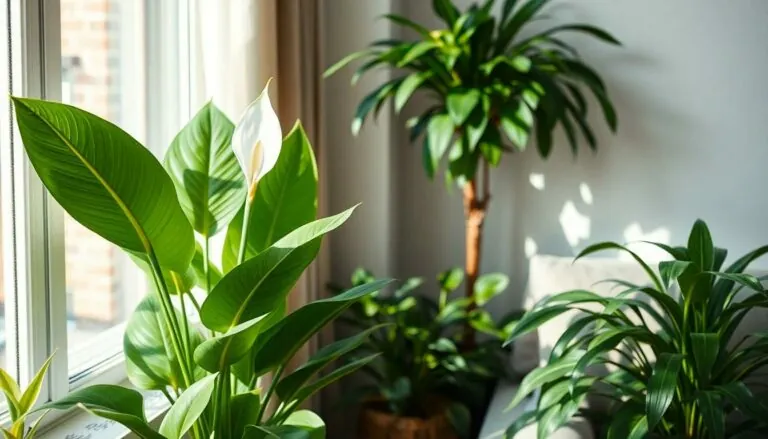Table of Contents
ToggleIf you’re looking to add a splash of color to your outdoor space, the cordyline plant is like that friend who shows up to a party and instantly makes it more fun. With its striking foliage and vibrant hues, it’s hard not to be charmed by this tropical beauty. But before you rush out to buy one, let’s talk about how to keep it thriving in your garden.
Overview of Cordyline Plants
Cordyline plants, known for their striking foliage, serve as vibrant focal points in gardens. These tropical plants, belonging to the Asparagaceae family, feature long, narrow leaves that can range in color from green to deep purple. They thrive best in warm, humid environments, making them ideal for outdoor settings in USDA hardiness zones 9 to 12.
Height varies among types, with some species reaching heights of up to 10 feet. Cordyline fruticosa, commonly known as ti plant, remains popular due to its eye-catching colors and ability to adapt well to various conditions. Plant height and color variety contribute to their appeal, allowing for creative landscaping opportunities.
When cultivating cordyline outdoors, attention to sunlight is crucial. These plants prefer partial to full sun, thriving in well-draining soil that retains moisture yet does not become waterlogged. Regular watering supports their vibrant appearance, especially during hotter months. Fertilization every four to six weeks with a balanced liquid fertilizer enhances growth.
Pests can occasionally affect cordyline plants, with spider mites and scale insects being the most common. Monitoring for these pests ensures the plants remain healthy and lush. Pruning helps to maintain shape and encourage new growth, especially after flowering.
Overall, cordyline plants offer versatility and aesthetic appeal in outdoor gardens. Their care requires understanding their light and water needs along with proactive measures against pests, ensuring vibrant, thriving specimens.
Ideal Outdoor Conditions
Cordyline plants thrive under specific outdoor conditions. Providing the right environment ensures robust growth and vibrant foliage.
Sunlight Requirements
Cordyline plants require partial to full sun for optimal growth. Direct sunlight boosts their color and overall health. These plants flourish best with at least 4 to 6 hours of sunlight daily. Opt for locations that receive morning sun, as this supports leaf expansion while shielding from harsh afternoon light. Lack of adequate sunlight may lead to stunted growth or faded colors. While adaptable, exposure to too much shade diminishes its vibrancy.
Soil Type and Drainage
Soil type plays a crucial role in cordyline health. Well-draining soil prevents root rot and supports growth. A sandy or loamy mixture enriched with organic matter suits cordyline plants perfectly. Moisture retention is essential, but standing water must be avoided. Test drainage by watering and observing how quickly the soil absorbs moisture. Amending heavy clay soils with perlite or compost improves drainage. Effective soil conditions contribute significantly to thriving cordyline plants in outdoor settings.
Watering Tips
Proper watering ensures the cordyline plant thrives outdoors. Understanding the watering needs makes caring for this vibrant plant more effective.
Frequency of Watering
Water the cordyline plant regularly, particularly during the warmer months. In hot weather, daily watering may be necessary, especially in sandy or fast-draining soils. Soil moisture should be monitored closely, ensuring it stays consistently moist but not soggy. Reduce watering frequency during cooler months, allowing the soil to dry out slightly between waterings. An established cordyline that reaches over five feet in height may require less frequent watering as its roots grow deeper. Overall, maintaining a balanced watering routine supports healthy growth.
Signs of Overwatering
Detecting signs of overwatering is critical for cordyline health. Yellowing leaves often signal too much moisture in the soil. Dropping foliage can indicate that roots are rotting due to excess water. Examine the soil for saturated conditions, which can harm the plant. Foul odors from the soil hint at root decay, an issue needing immediate attention. If these symptoms occur, consider reducing watering frequency and improving soil drainage to promote recovery. Taking these steps helps maintain the vibrant appearance of the cordyline plant.
Pruning and Maintenance
Pruning is essential for maintaining the health and appearance of cordyline plants. Regular maintenance ensures continued vibrancy and encourages growth.
When to Prune
Pruning cordyline plants typically occurs at the beginning of spring. This timing allows for the removal of any dead or damaged leaves before new growth starts. Consider pruning in late winter as well if the plant shows signs of overgrowth or if the structure looks unruly. Regular checks throughout the growing season can help identify any branches in need of trimming. By focusing on the overall shape and health, pruning can help enhance sunlight exposure and air circulation.
Tools Needed for Pruning
Using the right tools promotes effective pruning of cordyline plants. Sharp, clean pruning shears work best for cutting through leaves and stems. Gloves protect hands from sharp edges and any potential sap. A saw could be necessary for larger stems that are difficult to manage with shears. Additionally, disinfecting tools with rubbing alcohol or bleach prevents the spread of diseases. Having these tools readily available makes the pruning process straightforward and efficient.
Common Pests and Diseases
Cordyline plants often face issues with pests and diseases, which can directly impact their health. Spider mites frequent these plants, especially in dry conditions. Scale insects can attach themselves to leaves and stems, causing damage and weakening the plant.
Regular inspection helps identify these pests early. An effective method for managing spider mites involves spraying water to increase humidity and deter infestations. Scale insects may require manual removal or pesticide application for control.
Fungal diseases also pose a threat. Leaf spot disease manifests as dark spots on leaves, often due to overwatering or poor air circulation. Proper watering methods and spacing between plants improve airflow, reducing the likelihood of fungal problems.
Root rot may occur if the soil remains too wet. Symptoms include yellowing leaves and stunted growth. Amending soil mixtures improves drainage and prevents root issues.
Moreover, aphids can sometimes be found on emerging growth. While they are small, a large infestation can cause significant damage. Applying insecticidal soap helps control aphid populations.
Monitoring plant health remains crucial. A combination of good cultural practices, including regular pruning and proper watering, aids in pest and disease prevention. Keeping the planting area clean minimizes debris that may harbor pests, contributing to healthier cordyline plants.
Fertilization Guide
Fertilization plays a crucial role in maintaining the vibrant colors and overall health of cordyline plants. Every four to six weeks, applying a balanced liquid fertilizer encourages robust growth during the growing season. This type of fertilizer typically contains equal parts nitrogen, phosphorus, and potassium, promoting leaf development and root strength.
For optimal results, fertilization should occur during the warmer months when the plant is actively growing. Every application helps replenish soil nutrients essential for healthy foliage and root system development. It’s beneficial to water the plants shortly after fertilizing to help distribute nutrients effectively throughout the soil.
Container plants may require more frequent fertilization compared to those planted directly in the ground. This is due to the limited nutrient availability in pots. When using fertilizers, it’s important to follow the manufacturer’s recommended dilution rates to prevent fertilizer burn on the plant’s roots and leaves.
Monitoring the growth response after fertilization is essential. If leaf color remains pale or the plant appears stagnant, adjusting the fertilization routine may become necessary. In contrast, excessive growth or burned tips may indicate over-fertilization, warranting a reduction in frequency or concentration.
Organic fertilizers, such as compost or worm castings, present alternative methods worth considering. These options improve soil structure while providing nutrients gradually. Incorporating organic matter into the soil not only nourishes the plants but also enhances overall soil health.
Assessing fertilization needs regularly helps maintain the beauty and vitality of cordyline plants in outdoor settings. Keeping a record of fertilization dates and growth conditions can aid in fine-tuning the care routine for these vibrant additions to the garden.
Caring for cordyline plants outdoors can transform any garden into a tropical paradise. With their stunning foliage and unique colors they bring life and vibrancy to outdoor spaces. Proper attention to sunlight soil drainage and watering practices ensures these plants thrive in their environment.
Regular maintenance including pruning and monitoring for pests keeps them healthy and looking their best. By following these care guidelines gardeners can enjoy the beauty of cordyline plants for years to come. Embracing the right techniques will not only enhance the plant’s growth but also create a stunning focal point in any landscape.






